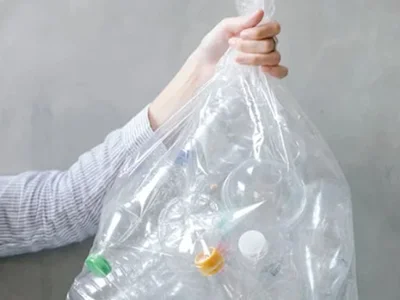Reclaim Waste Fundamentals Explained
Reclaim Waste Fundamentals Explained
Blog Article
Reclaim Waste - An Overview
Table of ContentsFascination About Reclaim WasteUnknown Facts About Reclaim WasteFacts About Reclaim Waste UncoveredSome Ideas on Reclaim Waste You Need To Know10 Easy Facts About Reclaim Waste Explained
Discover the types, occurrences, and kinds of liquid waste. Domestic sewer waste refers to the waste and items from a residential sewage-disposal tank. This sort of waste is developed by people in houses, colleges, and various other buildings. This only consists of septic storage tanks that have a drain field. The proper management and disposal of domestic sewage waste require fluid waste to be moved to a sewage treatment plant where the proper methods and equipment are put on detoxify and dispose of waste.
Commercial waste typically consists of potential dangers, such as combustible materials or a blend of fluid and solid waste items, and requires an advanced and comprehensive disposal procedure. The disposal of business waste generally includes the purification of waste before transportation to make sure secure and proper disposal. Industrial waste is produced from results and runoff of industrial processes and production.
This type of waste can not utilize the same sewage monitoring transport or procedures as septic or commercial liquids. The industrial waste management process requires the evaluation and testing of liquid waste before it goes through the disposal process (industrial wastewater treatment). Runoff waste is the fluid waste that originates from runoff and excess stormwater in extremely populated areas or cities
Runoff waste can cause contamination and flooding if not handled correctly. Ensuring correct waste monitoring can avoid disasters and reduce ecological damage.
The 6-Minute Rule for Reclaim Waste
Get in touch with PROS Services today to find out about our waste monitoring and disposal services and the correct ways to look after the liquid waste you generate.
(https://www.provenexpert.com/reclaim-waste/)This so-called 'wastewater' is not just an essential resource but, after treatment, will certainly be released to our land, rivers or the sea. Utilized water from bathrooms, showers, baths, kitchen area sinks, laundries and industrial processes is known as wastewater.

water utilized to cool down machinery or tidy plant and tools). Stormwater, a form of wastewater, is overflow that flows from agricultural and city locations such as roofing systems, parks, yards, roads, paths and rain gutters into stormwater drains, after rainfall. Stormwater moves without treatment directly to local creeks or rivers, ultimately getting to the ocean.
The Facts About Reclaim Waste Revealed
In Queensland, most wastewater is treated at sewage treatment plants. Wastewater is transported from residential or commercial websites through a system of sewage systems and pump terminals, known as sewage reticulation, to a sewer treatment plant. City governments construct, keep and run most sewage therapy plants. Operators are licensed under the Environmental Protection Act 1994 to discharge cured wastewater at an appropriate environmental requirement into rivers.
The Division of Natural Resources suggests city governments concerning handling, operating and preserving sewage systems and therapy plants. In unsewered areas, local federal governments might need owners to mount individual or household sewer treatment systems to treat residential wastewater from bathrooms, kitchen areas, restrooms and laundries. The Division of Natural Resources authorises the use of house systems when they are verified to be efficient.
The majority of stormwater receives no therapy. In some new subdivisions, therapy of some stormwater to eliminate litter, sand and crushed rock has started utilizing gross pollutant catches. Wastewater treatment occurs in 4 stages: Gets rid of solid issue. check my reference Larger solids, such as plastics and other items wrongly released to sewers, are eliminated when wastewater is passed through displays.
Makes use of tiny living microorganisms knows as micro-organisms to break down and get rid of staying liquified wastes and fine fragments. Micro-organisms and wastes are integrated in the sludge.
Getting The Reclaim Waste To Work
Nutrient removal is not available at all sewer therapy plants due to the fact that it requires expensive specialised equipment. Clear liquid effluent created after therapy might still include disease-causing micro-organisms - liquid waste disposal.

The majority of wastewater streams right into the sewerage system. Under the Act, neighborhood governments carry out approvals and permits for ecologically pertinent activities (Periods) involving wastewater launches that might have a neighborhood impact.
The Single Strategy To Use For Reclaim Waste
Or else, examples are considered lab analysis. Commonly numerous tests are needed to develop the degrees of each of the various toxins such as oils, heavy metals and pesticides in water. Tracking gives valid details about water quality and can verify that permit problems are being fulfilled. The details gotten via monitoring offers the basis for making water high quality decisions.
Report this page